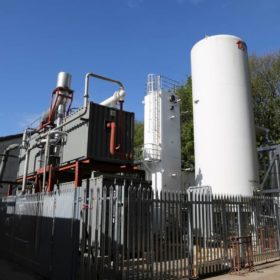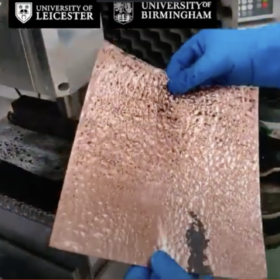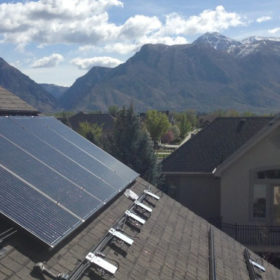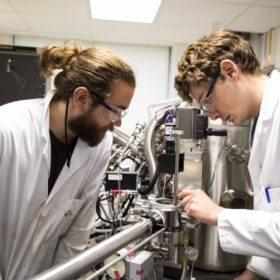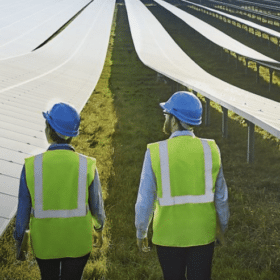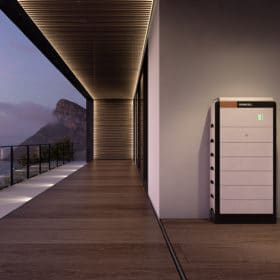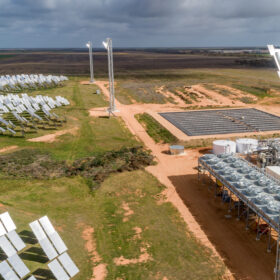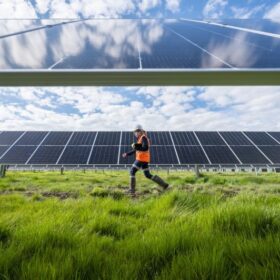A closer look at liquid air energy storage
A British-Australian research team has assessed the potential of liquid air energy storage (LAES) for large scale application. The scientists estimate that these systems may currently be built at a cost between €300 and €600 (AU$480 to $960) per megawatt-hour and that a positive business case could be favoured by certain conditions, including a determined price structure in the energy market and the presence of a grid unable to support high levels of renewable energy penetration.
From toothbrushes to saving the planet: How ultrasonic delamination could hold the key to battery recycling
The use of ultrasonic sound waves has been applied to battery recovery. Researchers from the ReLiB project at the U.K.’s Faraday Institution say the process has already proven to be 100 times faster than conventional approaches. It is also much more sustainable and less energy intensive.
Gravity-based storage for distributed solar
An international research team has designed a residential solar-plus-storage system based on gravity. The system was built with a solar power generator, a bulk booster charge controller, an inverter, a solenoid device, a deep cycle battery, a pulley block, a geared motor, a microcontroller, and wire ropes. Its creators said the system is ideal for regions with high solar radiation. They found that, due to its high electrical requirements, the system needs to rely on high-power solar modules with an output of over 500 W.
Organic solar for high-speed data detection and indoor light harvesting
Researchers in the United Kingdom have built a 14%-efficient organic PV device that can be used in high-speed optical wireless communication systems. The cell consists of a 4×2.5mm photoactive layer fabricated with a bulk heterojunction of a polymer donor and fullerene and non-fullerene acceptors.
Cracking the case for solid state batteries
Scientists in the UK used the latest imaging techniques to visualize and understand the process of dendrite formation and electrolyte cracking in an all solid-state battery. With new insight into the mechanisms by which these cracks form and ultimately lead to battery failure, the results could help direct the focus of future research into solid-state battery technology.
Saturday read: New pathways in flexible thin film
Having picked up GBP 5.8 million ($8 million) in a series of investments, U.K.-based Power Roll is pushing ahead with pilot production of an innovative new thin film with which it can manufacture both solar modules and capacitors. In the future, the design could also bring the potential for solar generation and energy storage within a single lightweight device.
Passive solar module cooling based on hydrogels beads and nanofluids
A British-Egyptian research group has tested the use of hydrogels beads for PV module cooling. The micro-sized particles were saturated with aluminium oxide (Al2O3) water-based nanofluids and placed below the simulated PV panels. The experiment showed, according to the scientists, that the hydrogels beads were able to significantly reduce the temperature by between 17.9 and 16.3 degrees Celsius.
Macquarie sets up unit to build 8 GW solar project pipeline in Europe
Green Investment Group, owned by Macquarie, has launched Cero Generation, which will operate on a European scale and carry out both ground-mounted and commercial scale power generation projects. It will also provide integrated energy storage solutions.
US alternative investment fund backs Social Energy for rapid Australian expansion
UK-based Social Energy launched in Australia with the help of shareholder Shane Warne back in 2019. Now the smart energy firm is being backed with a significant investment from US-based alternative investment fund manager CarVal Investors in order for the company to rapidly grow Down Under.
UK assembles experimental hydrogen network from decommissioned gas infrastructure
The £12.7 million project will explore how to transport pure and blended hydrogen for use in heating and industrial purposes. Construction will start next year.
